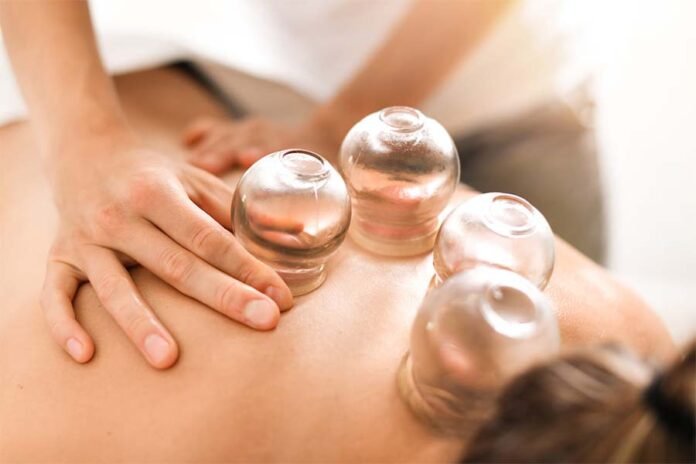In recent years, cupping therapy has gained popularity as a trendy wellness practice. Once primarily associated with traditional Chinese medicine, this ancient technique is now embraced by athletes, celebrities, and wellness enthusiasts worldwide. But what exactly is cupping therapy, and why has it become so popular? Let’s explore this fascinating practice.
What is Cupping Therapy?
Cupping therapy involves placing specially designed cups on the skin to create suction. This suction is believed to help promote healing, improve blood flow, and aid muscle recovery. With roots in ancient Egyptian, Greek, and Chinese cultures, cupping has been practiced for thousands of years.
How Does Cupping Therapy Work?
There are two primary techniques in cupping therapy:
- Dry Cupping: The most common method, where cups made of glass, bamboo, silicone, or plastic are applied to the skin, and the air is sucked out.
- Wet Cupping: This technique involves making small cuts on the skin before applying the cups, drawing a small amount of blood. Often used for detoxification, this method is believed to help cleanse the body.
Cupping is typically done on areas of tension or pain, such as the back, shoulders, and neck. The therapy is believed to improve circulation, reduce inflammation, and promote the body’s natural healing process.
The Rise of Cupping in Popular Culture
Cupping therapy has made its way beyond traditional roots and into mainstream wellness. Olympic swimmer Michael Phelps famously showcased his cupping marks during the 2016 Rio Olympics, bringing global attention to the practice. Many athletes now swear by cupping for quicker recovery, reduced muscle soreness, and improved performance. This has led to a surge of interest, with more people seeking treatments at spas, wellness centers, and even medical facilities.
Read Also- Bollywood Glamour at Limelight Diamonds’ Store Opening in Delhi
Benefits of Cupping Therapy
- Pain Relief: Cupping is widely used for pain relief, especially for those with chronic conditions. By creating suction on the skin, it increases blood flow, bringing more oxygen and nutrients while removing metabolic waste. Many people find relief from conditions like lower back pain, tension headaches, and arthritis, making cupping a popular alternative or complement to other pain management techniques.
- Athletic Recovery: Athletes use cupping as part of their recovery routine after intense training or competitions. By increasing blood flow, the therapy helps to reduce muscle soreness and stiffness. Many athletes report that cupping not only alleviates discomfort but also enhances their performance by improving flexibility and mobility.
- Detoxification: Proponents of wet cupping believe it helps detoxify the body by drawing out stagnant or “stale” blood, stimulating natural detoxification processes, and promoting overall health. However, it’s important to approach these claims with caution and seek professional advice.
- Inflammation Reduction: Cupping is thought to have anti-inflammatory properties, making it beneficial for those with chronic inflammatory conditions like fibromyalgia, arthritis, and sports injuries. The suction stimulates the immune response, helping to reduce swelling and discomfort, and improve mobility.
- Relaxation and Stress Relief: Beyond its physical benefits, cupping is also known for relaxation and stress relief. Many people describe it as a deep tissue massage, as the gentle suction feels soothing. This can help lower stress hormones and promote overall well-being, making it a popular choice for holistic wellness.
What Does the Science Say?
While many individuals report positive outcomes, scientific evidence on cupping therapy is still emerging. A review published in BMJ Open suggested that cupping may be effective for conditions like chronic pain, but emphasized the need for more rigorous clinical trials. As with many alternative therapies, results can be subjective and may vary from person to person.
Read Also- HCG Manavata Cancer Centre Launches ‘Pink Mela’ For Breast Cancer Awareness Month
Safety and Side Effects of Cupping Therapy
When performed by a trained practitioner, cupping is generally safe. However, there are potential side effects:
- Bruising: The suction often leaves temporary bruises, which may be unsightly but are usually harmless.
- Skin Irritation: Some individuals might experience skin irritation or rashes after treatment.
- Infection Risk: Wet cupping carries a risk of infection if not performed in sterile conditions.
Who Should Avoid Cupping?
Cupping may not be suitable for everyone. People with certain health conditions, such as blood disorders or skin issues, should consult a healthcare provider before trying cupping therapy. Pregnant women and those with compromised immune systems are also advised to exercise caution.
A Blend of Tradition and Modernity
Cupping therapy represents a unique blend of ancient practice and modern wellness. While it has gained a trendy status, its roots go back thousands of years. As with any trend, it’s essential to approach it with informed skepticism and consult a professional before diving in. Whether you’re seeking pain relief, relaxation, or detoxification, cupping could be a new addition to your wellness routine. As research continues, we may learn even more about its benefits and mechanisms.
In an age where self-care is a priority, cupping therapy offers a blend of tradition, efficacy, and intrigue for those looking to explore holistic wellness solutions.
Read Also- 5 Celebrities Championing Sustainable Fashion & Where to Shop Their Pre-Loved Styles


